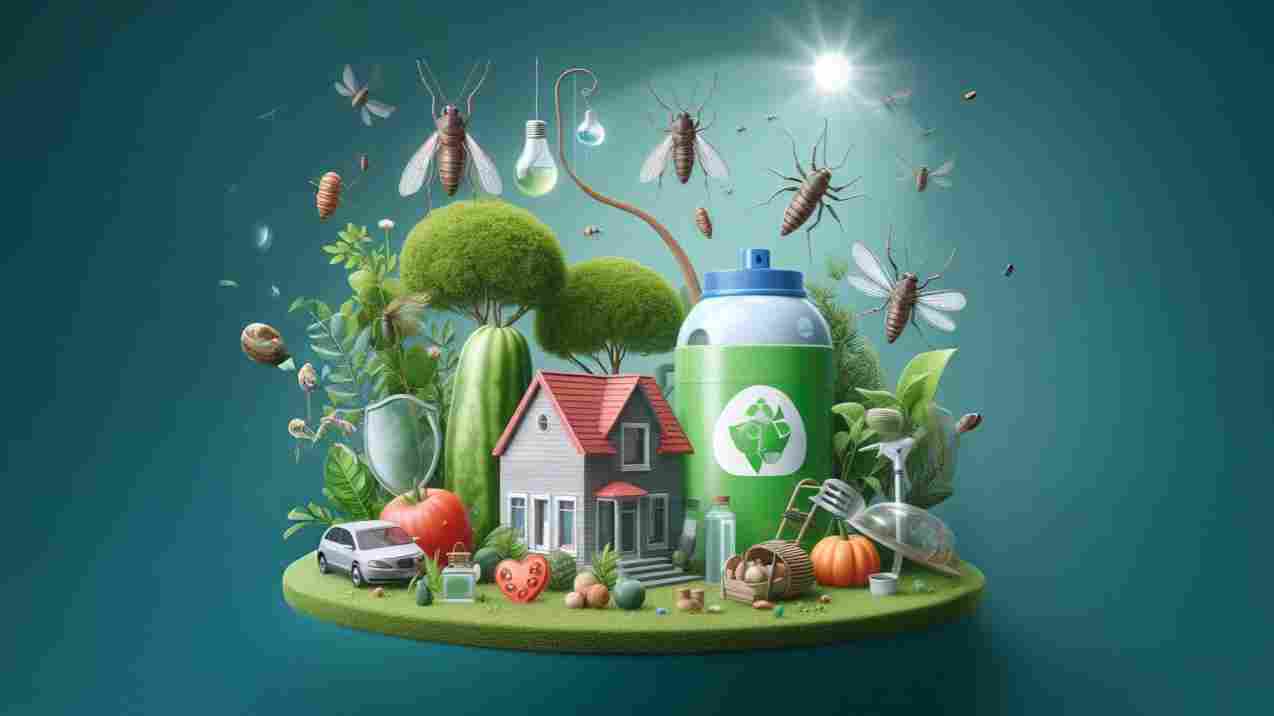Pests are a common challenge for farmers and gardeners, threatening crops, reducing yields, and increasing costs. While chemical pesticides are often used to control pests, they can harm the environment, beneficial insects, and human health. Fortunately, there are eco-friendly pest control methods that can effectively manage pests without relying on harmful chemicals.
In this blog post, we’ll explore natural ways to combat pests, from biological controls to organic repellents. Whether you’re a small-scale farmer or a home gardener, these methods will help you protect your plants while promoting a healthy and sustainable ecosystem.
Why Choose Eco-Friendly Pest Control?
Eco-friendly pest control offers numerous benefits over chemical pesticides:
- Protects the Environment: Reduces pollution and preserves biodiversity.
- Safeguards Human Health: Minimizes exposure to toxic chemicals.
- Promotes Soil Health: Avoids harming beneficial soil organisms.
- Saves Money: Many natural methods are cost-effective and use readily available materials.
10 Eco-Friendly Pest Control Methods
1. Biological Control
Biological control involves using natural predators or parasites to control pest populations.
Examples:
- Ladybugs: Feed on aphids, mites, and other soft-bodied insects.
- Parasitic Wasps: Lay eggs inside pest insects, killing them.
- Nematodes: Microscopic worms that attack soil-dwelling pests like grubs.
How to Use:
- Introduce beneficial insects to your garden or farm.
- Create habitats like flowering plants to attract natural predators.
2. Companion Planting
Companion planting involves growing certain plants together to repel pests or attract beneficial insects.
Examples:
- Marigolds: Repel nematodes and aphids.
- Basil: Deters mosquitoes and flies.
- Nasturtiums: Attract aphids away from other plants.
How to Use:
- Plant companion crops alongside your main crops.
- Rotate companion plants to disrupt pest cycles.
3. Neem Oil
Neem oil is a natural pesticide derived from the neem tree. It disrupts the life cycle of pests and acts as a repellent.
Uses:
- Controls aphids, whiteflies, and spider mites.
- Prevents fungal diseases like powdery mildew.
How to Use:
- Mix neem oil with water and a few drops of dish soap.
- Spray on affected plants every 7–14 days.
4. Diatomaceous Earth
Diatomaceous earth is a fine powder made from fossilized algae. It damages the exoskeletons of insects, causing dehydration and death.
Uses:
- Effective against ants, beetles, and slugs.
- Safe for humans and pets.
How to Use:
- Sprinkle around the base of plants or on pest-infested areas.
- Reapply after rain or watering.
5. Garlic and Chili Spray
A homemade spray made from garlic and chili peppers can repel a wide range of pests.
Uses:
- Deters aphids, caterpillars, and beetles.
- Safe for most plants.
How to Use:
- Blend garlic cloves and chili peppers with water.
- Strain and spray on plants, avoiding direct sunlight.
6. Row Covers and Netting
Physical barriers like row covers and netting can prevent pests from reaching your plants.
Uses:
- Protects against insects, birds, and small animals.
- Allows sunlight and water to reach plants.
How to Use:
- Install row covers over seedlings or vulnerable crops.
- Secure edges to prevent pests from entering.
7. Crop Rotation
Crop rotation involves changing the types of crops grown in a specific area to disrupt pest cycles.
Uses:
- Reduces soil-borne pests and diseases.
- Improves soil health and fertility.
How to Use:
- Rotate crops with different pest vulnerabilities.
- Avoid planting the same crop family in the same area consecutively.
8. Organic Mulch
Organic mulch like straw, wood chips, or compost can deter pests and improve soil health.
Uses:
- Suppresses weeds that harbor pests.
- Creates a barrier against soil-dwelling insects.
How to Use:
- Apply a thick layer of mulch around plants.
- Replenish as needed to maintain coverage.
9. Handpicking and Traps
Manually removing pests or using traps can be effective for small infestations.
Examples:
- Handpicking: Remove larger pests like caterpillars or beetles by hand.
- Sticky Traps: Capture flying insects like whiteflies or fruit flies.
- Beer Traps: Attract and drown slugs and snails.
How to Use:
- Inspect plants regularly for pests.
- Place traps near affected plants.
10. Healthy Soil Management
Healthy soil supports strong plants that are more resistant to pests and diseases.
Practices:
- Add compost or organic matter to improve soil fertility.
- Avoid over-fertilizing, which can attract pests.
- Maintain proper pH levels for optimal plant health.
How to Use:
- Test soil regularly and amend as needed.
- Practice no-till or reduced-till farming to preserve soil structure.
Tips for Effective Eco-Friendly Pest Control
1. Monitor Regularly
Inspect your plants frequently to catch pest problems early.
2. Use a Combination of Methods
Combine multiple natural pest control methods for better results.
3. Encourage Biodiversity
Diverse ecosystems are more resilient to pest outbreaks.
4. Be Patient
Natural methods may take longer to show results but are more sustainable in the long run.
Challenges of Eco-Friendly Pest Control
While eco-friendly pest control is beneficial, it also comes with challenges:
1. Time-Consuming
Natural methods often require more effort and time than chemical pesticides.
2. Variable Effectiveness
Results may vary depending on the pest species and environmental conditions.
3. Knowledge and Skill
Effective implementation requires knowledge of pest behavior and natural control methods.
Conclusion
Eco-friendly pest control is a sustainable and effective way to protect your crops and garden while preserving the environment. By using methods like biological control, companion planting, and organic sprays, you can manage pests naturally and promote a healthy ecosystem.
Remember, the key to successful pest control is prevention and early intervention. With patience, persistence, and a commitment to sustainability, you can combat pests naturally and enjoy a thriving garden or farm.










